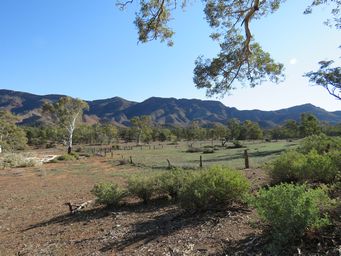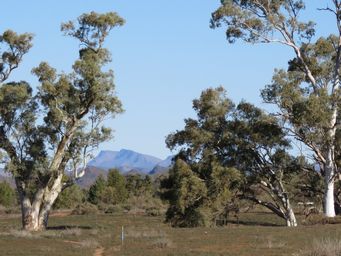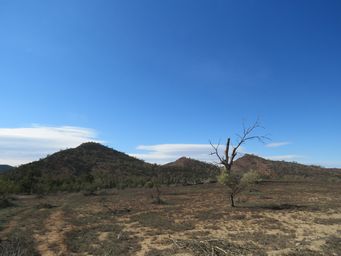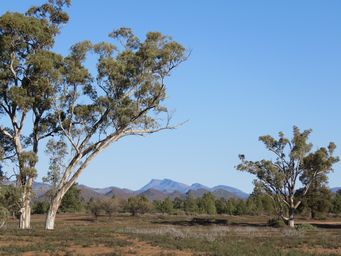Australia So Much to See
The Flinders Ranges - Aroona Valley Station ruins and campground
Driving between lovely ranges, we marvelled at the contrast coming from a mainly flat dry dusty outback, then meeting green hills and beautiful softly coloured ranges.
Parachilna has a hotel combined fuel outlet with the Prairie Hotel. This quaint hotel is known
for its ‘feral mixed grill’.
There seemed to be more buildings in this tiny townsite than I remember from last time (2006).
The track into Aroona follows the valley between the Heysen Range on the west side and the ABC Range on the east side. It is six kilometres
in to the campsite and day area.
Aroona campground is in a lovely semi shady bushland, with sites spread out. They
are not really suited to big rigs, and are not drive through. There are very clean pit toilets, each with a water tank and a
tap outside. There is an additional tap on a poly pipe system from the old station springs. There are fire places
at some campsites, but wood may not be collected within the Ikara-Flinders Ranges National Park. Wood fires and solid fuel fires
are prohibited between 1 November 2019 to 15 April 2020.
This time we turned in Brachina Gorge from the western side. But before I talk about the Brachina Gorge geological trail, I
will start at the Aroona Valley, which is where we headed to stay in the National Parks Campground there. This is accessed approximately
half way through the Brachina Gorge drive.
Before leaving Copley, we booked into the Ikara-Flinders Ranges National Park
campground at Aroona, as bookings and payments for South Australia park entry and camping must now be done on line, and there is no
mobile phone reception in the national park.
The name Aroona is from an Aboriginal word meaning
running water or place of frogs.
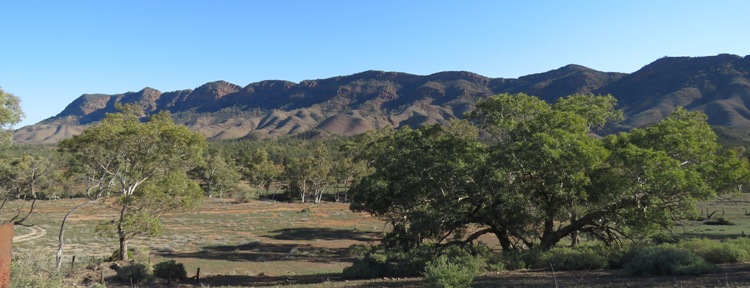
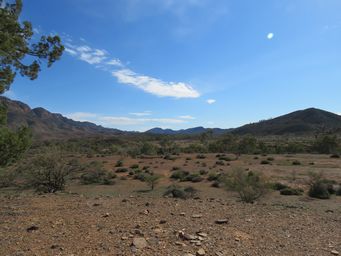
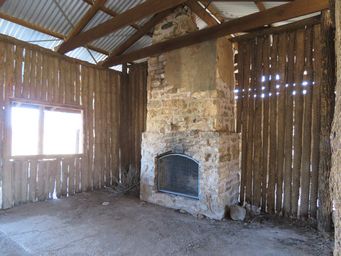
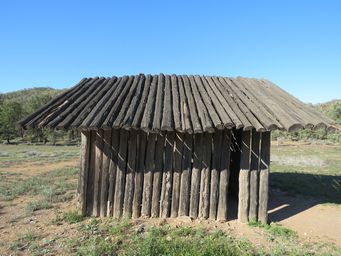
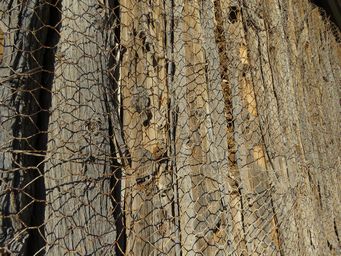
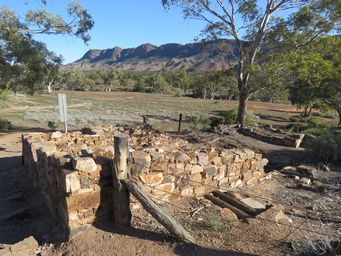
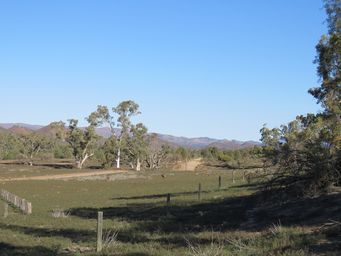
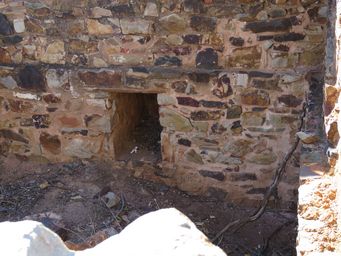
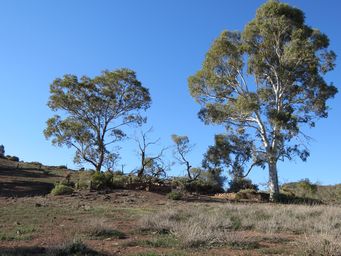
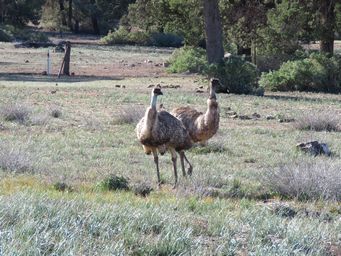
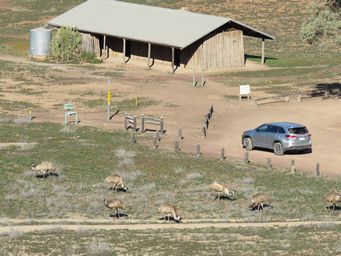
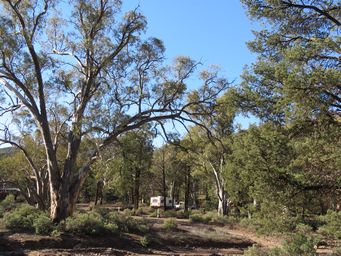
A day parking area with water and picnic tables is at the start of the walk to the Aroona Homestead ruins and the continuing Heysen
Trail. There is a re-roofed and stabilised outstation pug and pine hut.
The interior of the stabilised hut (below
left).
The droughts destroyed the pastoral runs and put an end to gross overstocking. Smaller runs never recovered. Some were
absorbed into bigger stations, and others were abandoned.
In the 1920s Aroona became an outstation of Oraparinna. Spring
water was used to grow extensive gardens here.
A short climb further up the hills is the site of the station homestead, chosen due to fresh water springs there. The Aroona
Valley was run for sheep grazing in the 1850s, and ran up to 10,000 sheep. Only the stone foundation and a partial wall
remain. It was built in 1851 for John Hayward described it as a splendid dwelling with five rooms and ten foot long verandah;
a big advancement on the single room pug and pine huts of the era. There was also a two roomed building with a cellar for keeping
supplies cool in the hot summer months. A large irrigated garden and orchard had figs, vines, fruit trees, melons and pumpkins. Today willows, mulberries and wattles are all that remain. In the flatter area below the homestead, stock yards and paddocks
remain.
Hayward complained of the hardships of farming, where natives would steal his sheep, and they were attacked by wild
dogs. Always short staffed, he felt he got the dregs of the colony as shepherds and hut keepers. Hence the profits derived
from the station were small and in some years nil.
Despite these problems, Hayward sold the property in 1862 and returned
to England a rich many. Having arrived fifteen years earlier at the age of 21 with only £40, her returned with £40,000, a sizable
fortune at the time. He retained a keen interest in South Australia and on a return visit in 1869 he purchased Canowie Station
near Hallett.
In 1864 to 1866 the area suffered a drought, the farm was deserted, and the homestead lay in ruins by 1889.
A small building (at right) shows how pine buildings looked.
Pug was a filling made from clay to seal between the timber.
Artist Hans Heysen made many trips to the Flinders Ranges, beginning in 1926. He described the Flinders Ranges as "a very old land where the primitive forces of Nature were constantly evident." He made studies while on location and developed these into finished works in his studio in Hahndorf. Heysen's The Three Sisters of Aroona was developed from studies painted here, with the three pyramid shaped hills he used in this painting above right.
His soft and natural painting style together with the white trunked trees, the colours and sculptured shapes of Flinders Ranges were a beautiful combination. The view from the campground to the peaks of Wilpena Pound depicts what Hans Heysen would have seen (above left).
He used the Aroona Hut, built in the 1920s by shepherd Eddie Pumpa, as his base. The Aroona Hut is now a ruin.
